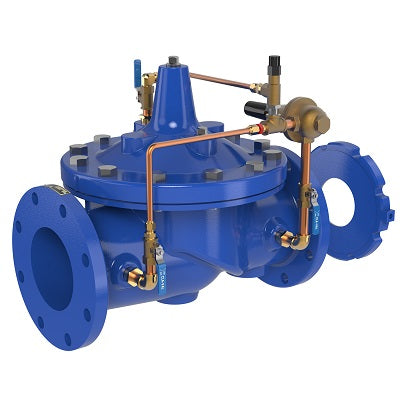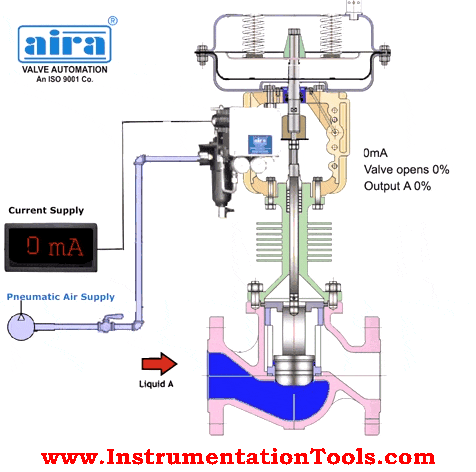How Control Valves Influence Energy Efficiency in Industrial Settings
How Control Valves Influence Energy Efficiency in Industrial Settings
Blog Article
Achieve Seamless Assimilation and Control With High Quality Structure Automation Controls
In the realm of contemporary structure management, the value of high quality structure automation controls can not be overstated. Welcoming high quality building automation controls is not merely an issue of benefit but a calculated imperative for companies intending to enhance their centers' performance and sustainability.

Evolution of Structure Automation Controls
Throughout the previous few decades, the advancement of building automation controls has actually considerably changed the means buildings are handled and run. Initially, building automation systems mainly concentrated on basic functions such as controlling air, heating, and ventilation conditioning (HVAC) systems. Nonetheless, as innovation progressed, these controls have become a lot more sophisticated, permitting a bigger series of building systems to be incorporated and managed centrally.
The evolution of building automation controls has actually seen a change towards more intelligent systems that can adapt to changing conditions in real-time. This adaptability is essential for optimizing energy performance and guaranteeing resident comfort. Additionally, contemporary building automation controls currently offer functions such as anticipating upkeep, remote tracking, and data analytics, enabling center supervisors to make data-driven choices to enhance structure performance.

Benefits of Quality Assimilation
The development in building automation controls towards more intelligent systems has highlighted the considerable advantages of quality integration in enhancing building operations and boosting overall efficiency. Quality assimilation of constructing automation controls supplies numerous key advantages. It leads to boosted energy efficiency by permitting different systems to work together seamlessly, ensuring optimum performance and decreasing energy wastefulness. Second of all, high quality combination enhances occupant convenience and efficiency by allowing personalized control over ecological setups like air, temperature, and lights top quality. This modification can cause a more comfy and helpful working or living environment. Furthermore, quality combination streamlines upkeep and repairing processes, as all systems are adjoined and can be checked and controlled from a centralized interface. This central control also offers better visibility and insights into structure performance, making it possible for proactive upkeep and optimization methods. On the whole, the benefits of high quality assimilation in structure automation controls are indisputable, using raised efficiency, comfort, and operational efficiency.
Enhanced Customer Experience and Availability
Enhancing individual communication with structure automation regulates with intuitive style and enhanced ease of access raises the overall experience for owners and facility managers alike. By concentrating on user experience, constructing automation systems can end up being a lot more effective and easy to use. Instinctive interfaces, clear navigating, and personalized setups equip users to interact with the controls conveniently and efficiently.
Access features play an important function in ensuring that all people, consisting of those with handicaps, can utilize the structure automation controls with convenience. Incorporating attributes such as voice commands, responsive switches, and color-contrasted screens can enhance ease of access and make the controls much more comprehensive.
Furthermore, enhanced user experience causes greater individual fulfillment, raised productivity, and much better decision-making. Passengers can readjust ecological settings according to their choices, while facility supervisors can efficiently keep track of and take care of building systems - control valves. On the whole, prioritizing customer experience and accessibility in structure automation regulates contributes to a much more seamless and productive building environment for all stakeholders entailed
Sustainable Practices With Automation

In addition, automation can assist in the assimilation of renewable resource resources such as solar panels or wind generators right into building procedures. By automatically adjusting energy use based upon the availability of eco-friendly energy, structures can better decrease their Clicking Here reliance on non-renewable resources. This seamless assimilation of lasting techniques not just benefits the environment but likewise boosts the total operational performance and cost-effectiveness of the structure. Via automation, structures can straighten with modern sustainability objectives and add to a greener future.
Future Trends in Building Control Equipment
In anticipation of progressing technologies and evolving sustainability methods, the trajectory of structure control systems is positioned to accept transformative strategies and innovative services. One noticeable fad forming the future of structure control systems is the raised integration of Expert system (AI) and maker understanding. These modern technologies allow buildings to adjust in real-time to transforming problems, optimizing energy consumption and enhancing convenience for passengers. Furthermore, the Internet of Things (IoT) is revolutionizing structure control systems by connecting devices and sensing units you could try this out to improve and simplify procedures efficiency.
Another crucial pattern is the emphasis on cybersecurity measures to shield against possible threats to constructing automation systems. As buildings end up being extra interconnected, guaranteeing durable cybersecurity methods will certainly be important to safeguard delicate information and avoid unauthorized gain access to.
Additionally, the change towards cloud-based platforms is acquiring energy, permitting centralized control and remote accessibility to structure systems. This More Help assists in much easier tracking, maintenance, and updates, boosting the overall efficiency and versatility of building control systems. As modern technology proceeds to breakthrough, these trends are anticipated to form the future landscape of building automation controls, driving development and sustainability in the built atmosphere.
Final Thought
Future fads in building control systems are most likely to focus on additional enhancing automation abilities for enhanced energy performance and overall efficiency. It is vital for building proprietors and drivers to prioritize the fostering of high quality building automation manages to optimize structure operations and accomplish lasting sustainability objectives.
In the world of modern structure administration, the value of quality building automation controls can not be overstated. Generally, the development of structure automation regulates proceeds to drive development in the building monitoring sector, supplying brand-new opportunities for developing smarter and much more sustainable buildings.
The advancement in structure automation regulates in the direction of even more intelligent systems has highlighted the considerable advantages of high quality combination in optimizing structure procedures and enhancing general effectiveness. In general, prioritizing user experience and accessibility in structure automation regulates contributes to a more effective and seamless building setting for all stakeholders included.
It is important for structure owners and operators to focus on the adoption of quality structure automation regulates to optimize structure procedures and achieve long-lasting sustainability goals. - control valves
Report this page